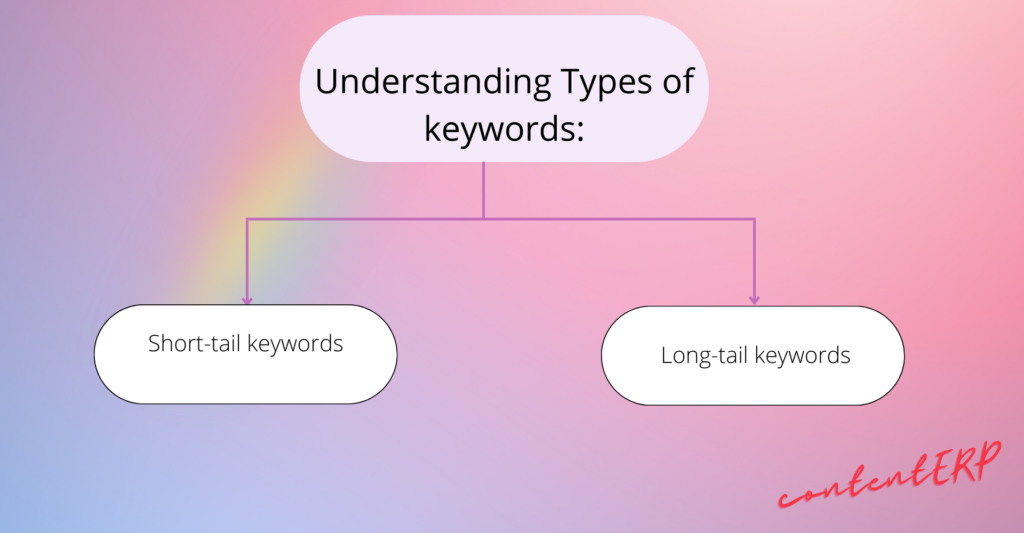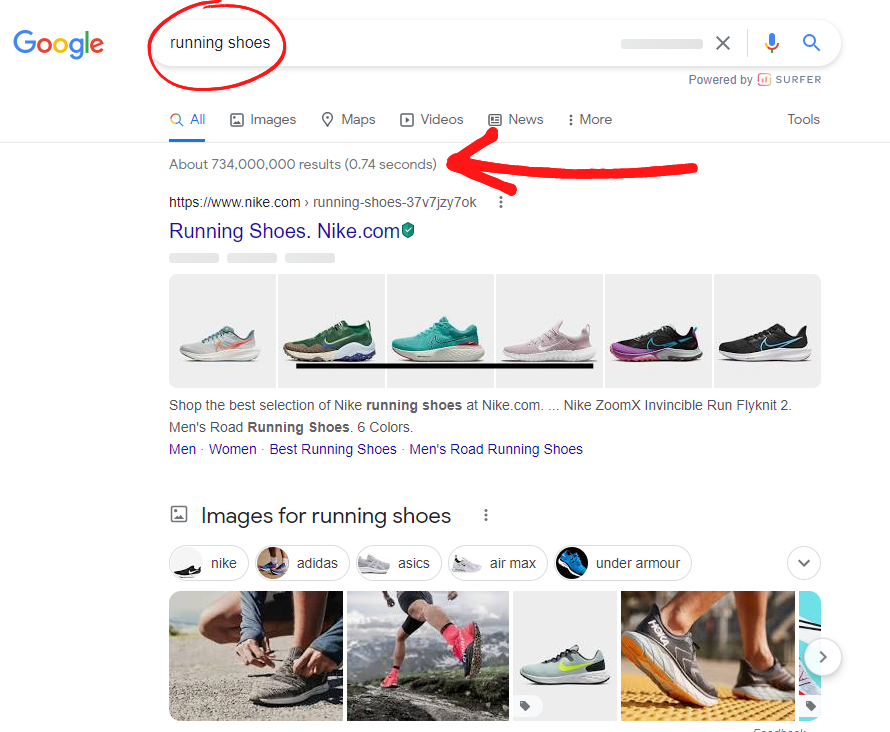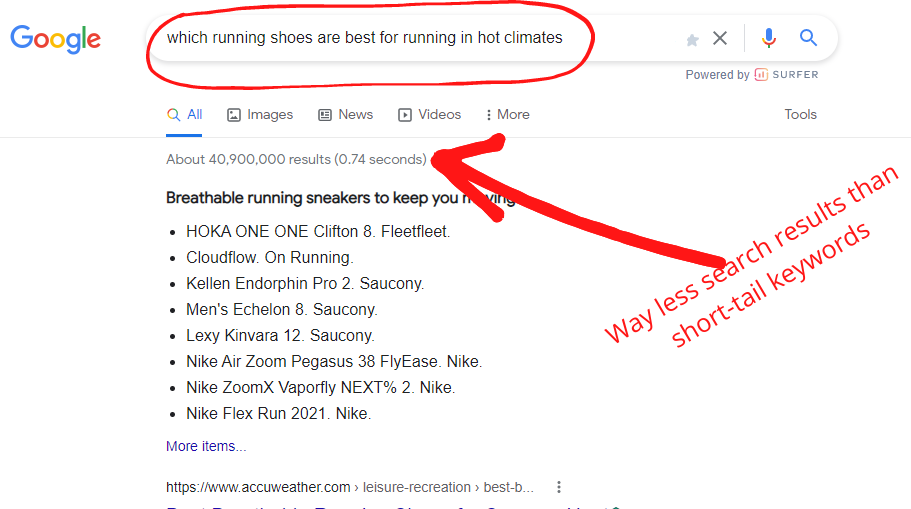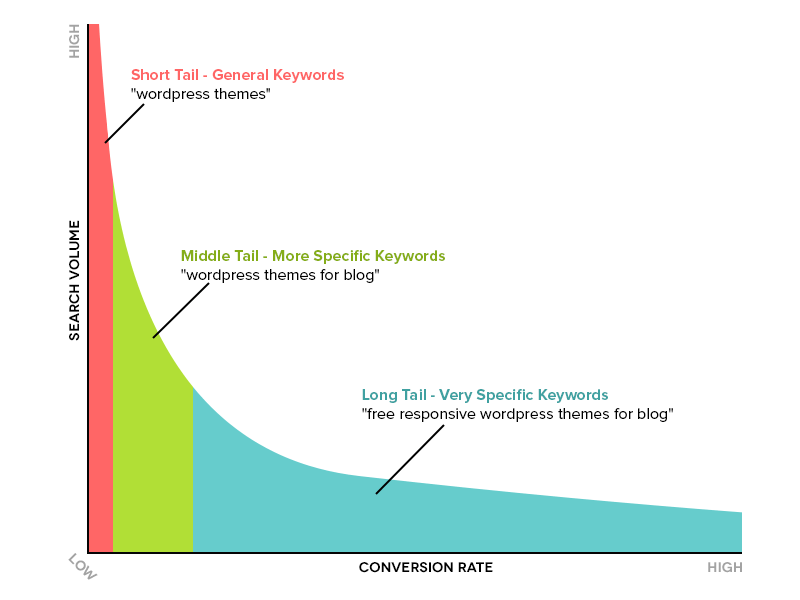Difference between long-tail and short-tail keywords in SEO
Introduction
We are on a quest to dig a little deeper into the different keyword types, focussing on long-tail and short-tail keywords. We’ve looked in part at some of the intricacies of SEO and the role of keywords in ranking on search engines like Google.
Keywords are the life-blood of search engines. You’ll need to conduct substantial keyword research to optimize your content to get more traffic and visibility in SERPs. But which keywords should you use in your metadata and web copy – short-tail, long-tail, or a combination?
Short-tail vs. Long-tail Keywords
The main difference between long and short-tail keywords is that long-tail keywords consist of four or more words while short-tail keywords contain one to two. These keywords are opposites because long tail keywords are targeted queries, and short tail keywords refer to broad topics.

Short-tail keywords
A short-tail keyword, also known as a ‘head term,’ is a general search term that typically contains one or two words and covers a broad topic. Short-tail keywords generally have higher search volume than long-tail keywords, which means they attract more website visitors.
Although head terms can receive lots of traffic, it’s not necessarily the highest quality since it’s a generic search that may not serve the right user intent for your product/service, leading to low conversion rates and a higher bounce rate. Short-tail keywords are also much more competitive, making it more difficult to rank for these terms, especially if your site has a low domain authority.
Characteristics of short-tail keywords
High Volume but low-quality searches
When it comes to volume, short-tail keywords will dominate long-tail keywords every time. The shorter the keyword is, the higher the search volume. You’ll get plenty of organic traffic if you could rank for a short tail keyword.
While these keywords have the potential to bring more visitors to your site, they may not be the qualified prospects you want.

High competition
Given the high search volumes, it’s no wonder everyone is trying to rank for short tail keywords; the reward is high. Competition for short tail keywords is highly competitive.
To give you a clearer picture, your content will appear after all the major brands like Nike, Addidas, or Sketchers for running shoe searches.
Unless your company is huge at the international level, getting into the first page of Google search results is tough.
Low Site Engagement
Short-tail keywords, because they are so broad, will attract some visitors that are not interested in your specific product or service, leading to very short visitor sessions and higher bounce rates.
Say you have a term that’s searched for a lot. Even if you get 10,000 searches and 100 clicks, your conversion rate may be one or two customers.
High Cost
Short tail keywords also have a cost factor that will get expensive. Google AdWords will charge you a pretty penny to get into the short tail keyword business for your common search terms. Because so many other people are buying them, you will need to pay a premium for your presence in these searches.
What are long-tail keywords?
Long-tail keywords can be extremely effective in bringing visitors to your site, but they can also be used to target users who are searching for your brand and intending to buy from you. These terms contain more than three words, target users at different stages of the buying funnel, and tend to be more descriptive – for example, ‘designer handbags for work’ or ‘which iPhone has the best camera.’
Long-tail keywords have a lower search volume than short-tail keywords. In other words, they are the ‘less popular’ search terms. However, they are more specific than short-tail keywords, providing greater detail to search engines and signaling search intent. So, although you may receive fewer site visits per keyword, long-tail keywords serve more specific results that are more likely to answer user intent and, as such, will attract higher quality traffic that is more likely to convert.
Characteristics of long-tail keywords
Low traffic volume
Traffic volume from long tail keywords will be far less. While long-tail keywords will generate a lower volume of visitors, this benefits a B2B company striving to reach a more targeted audience.

Low competition
The competition is also lower when you have decided on a long tail keyword. Since you are targeting specific keywords, your website has a greater chance of ranking higher in search engine page results.
High Focus
The targeted nature of your search traffic will be ideal for most businesses selling specific products or services. With more focus on the keywords your specific audience is searching for, your site is more likely to attract customers that will benefit from your business.
Low cost
Another added benefit to the lower traffic long tail keywords is that you will pay a lot less. Google AdWords has a reduced price for keywords that are less in demand. This means that you won’t show up nearly as high in general searches (until you become the preeminent name in your industry), but getting you there will cost you less.
High conversion rates
If you have people seeking your services specifically, your website will have a higher conversion rate for the traffic you generate. These conversion numbers will vary depending on your niche, but long-tail keywords make the process easier.
Moreover, your site is more likely to attract customers that return to check out other products simply because you spoke to their specific needs.

How to make the most of your short and longtail Keywords
Getting the best results out of your marketing strategy means learning how to blend long tail and short tail keywords effectively.
Both seed and long tail keywords have a role to play in your SEO. Here’s how to make sure that you’re using each option correctly:
Use seed keywords to guide your SEO strategy
In the argument of long tail vs. short tail keywords, think of your “long tail” terms as the narrow focus points in your content, while your seed terms are the “broad” categories you need to look at. Both play their part in your path to a better presence online, but you’ll need to start with your broad terms to help you navigate where you’re going to go with your campaigns.
For instance, knowing that one of your short tail keywords is “Fashion” opens the door to dozens of long tail keyword opportunities. You can build off your short tail terms by looking at the location of your target audience, your customer’s pain points, and the terms your competitors are ranking for.

Know how to place both long-tail and short-tail keywords
Keyword Research is only the first step in a successful keyword strategy. You also need to figure out how to place your keywords throughout your online campaigns effectively. Keyword placement can be difficult because if you use your terms too often, Google may penalize you for “spammy” content.
There are plenty of great ways that you can combine long tail and short tail keywords in your content marketing strategy. For instance, if your long tail keyword was “How to create a brand logo,” you can place that in a blog post title and use your short tail keyword in the permalink: www.YourWebsite.com/blog/brand-logo.
Short tail keywords also work well in alt tags, meta tags, and social media updates.
Customer satisfaction
Remember not to get so caught up in the SEO strategy that you lose sight of the big picture.
Whether you’re using short tail or long tail keywords, your primary focus should always be giving your customers what they’re looking for online. Your short seed keywords will help to direct your ideas by giving you categories to explore. On the other hand, your long-tail keywords will help you to dive down into deeper topics and more targeted content.
Consider how your customers search for your brand and what they think about during each buyer journey stage. This will help ensure you don’t waste time on unnecessary keywords.
How to find short-tail and long-tail keywords
We’ve covered the best free SEO tools in the market right now for keyword research. Here are some simplified options for a quick review.
- Answer The Public for the questions searchers are asking based on a seed keyword
- Google Autocomplete and Related searches provide insight into results related to your keyword terms based on people’s searches.
- SEMrush– Best freemium keyword analytics tool.
- Ahref’s keyword tool is also a freemium tool that provides data on your keyword.
Summary
the basic difference between short and long-tail keywords is the number of words that make up each term or phrase. However, depending on the age of your website, advertising budget, and experience with SEO will determine if you should focus on long-tail versus short-tail keywords in your digital marketing strategy.
As a business, you must decide which terms are most relevant to your website and your ideal customer. After all, you know your business better than anyone

